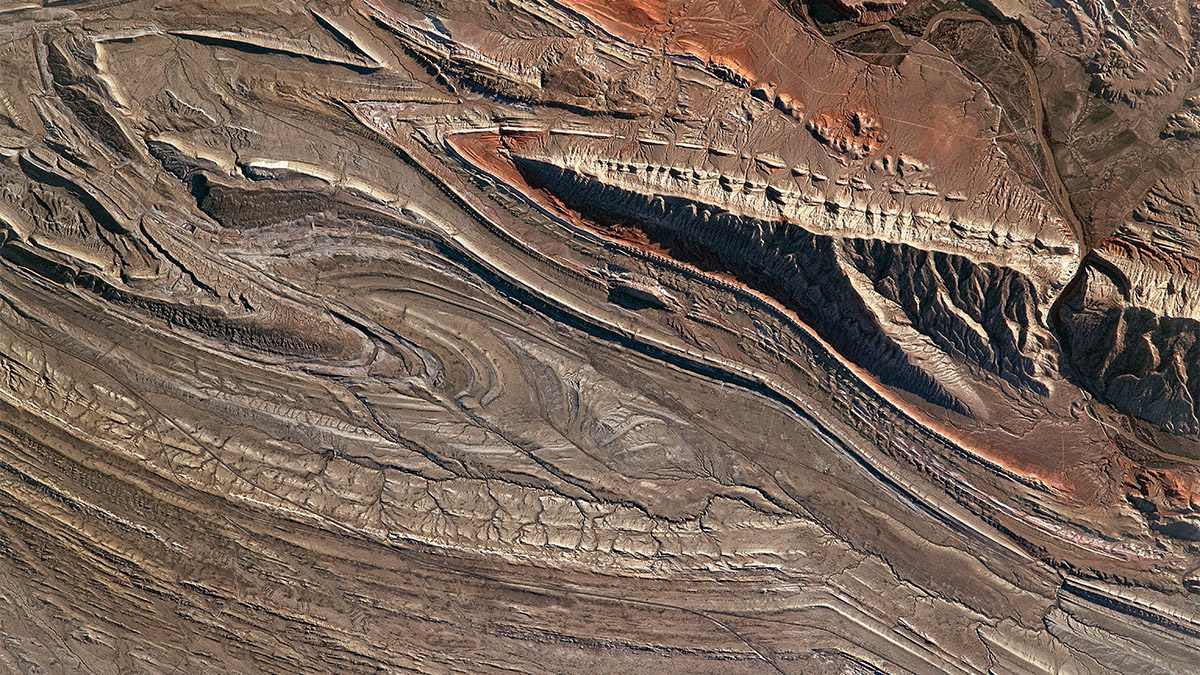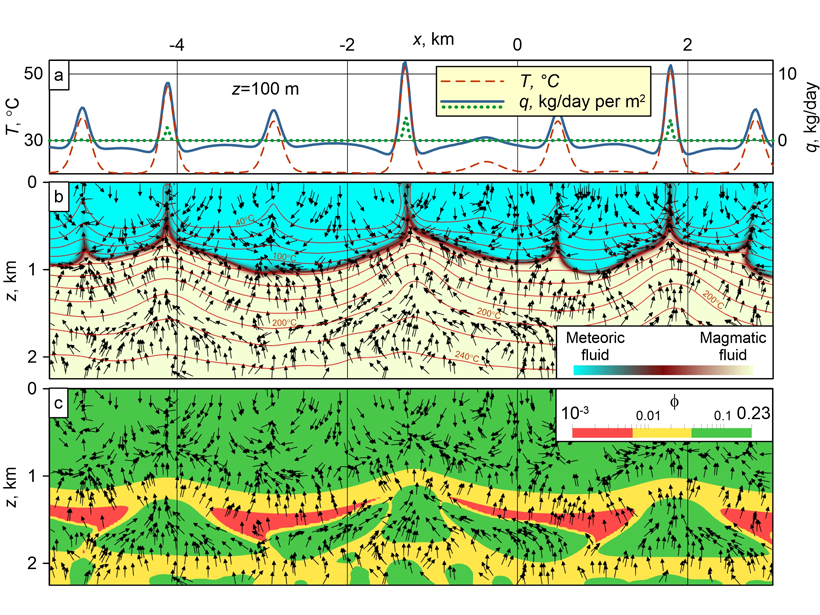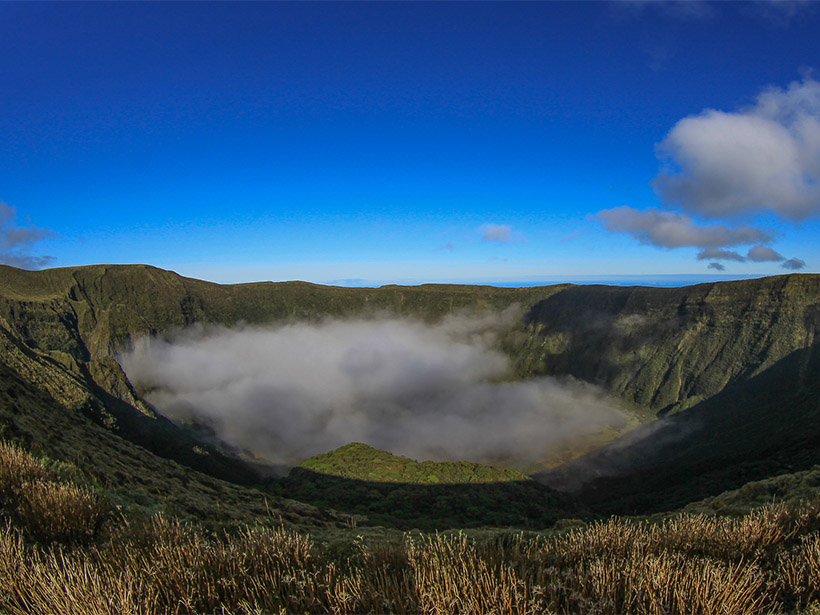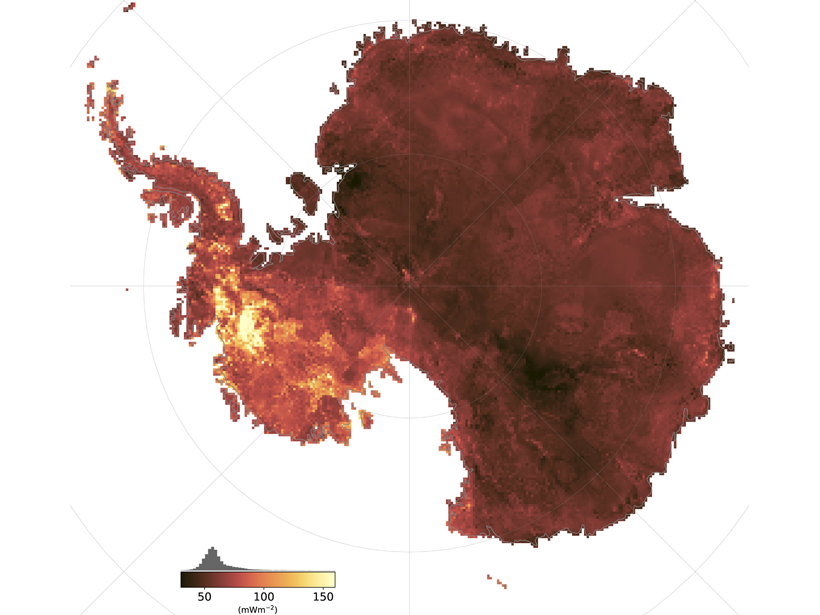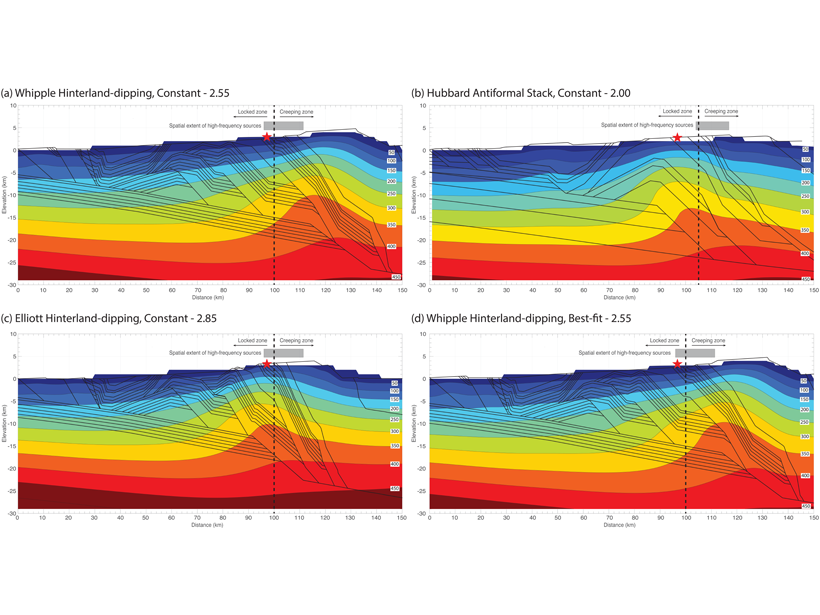There are various explanations for how the Earth’s continents form, develop, and change but challenges remain in fully understanding the driving forces behind plate tectonics on our planet.
Earth’s crust
Measuring Sea Level Rise Along the Coast
Scientists created a global map of vertical land motion to show how the solid ground is moving relative to the planet’s rising seas.
Coupled Mechanisms of Fluid Transport Across the Crust
Magmatic fluid moves up in the ductile zone through porosity waves, accumulates in high-porosity lenses, and migrates across the brittle zone in a convection pattern involving also meteoric fluid.
Earth’s Continents Share an Ancient Crustal Ancestor
How did today’s continents come to be? Geological sleuths found clues in grains of sand.
Crustal Motion and Strain Rates in the Southern Basin and Range Province
New research teases out variations in strain rates and explores potential earthquake hazards across the southern Basin and Range and Colorado Plateau.
A 360-degree View of Crustal Magmatic Systems
A new book presents an overview of crustal magmatic systems and explores variations within these systems through analytical, experimental, and numerical approaches.
Susan L. Beck Receives 2020 Walter H. Bucher Medal
Susan L. Beck was awarded the 2020 Walter H. Bucher Medal at the virtual AGU Fall Meeting in December. The medal is for “original contributions to the basic knowledge of the crust and lithosphere.”
Probing the Age of the Oldest Ocean Crust in the Pacific
A new study extends the calibration of the Mesozoic Sequence down to the Mid Jurassic with multiscale marine magnetic anomaly data, demonstrating extraordinarily high reversal frequency.
Taking the Temperature of Antarctica’s Crust
How do you measure the geothermal heat flux in a continent covered by an ice-sheet? A new study uses correlations of diverse global observables and produces a heat flow map of the entire Antarctica.
Deconvolving What Lies Beneath the Himalaya
A new study that combines constraints from the 2015 Gorkha earthquake, forward models of deforming crust, and thermochronology data gives new insights into the structure of the Himalaya.

